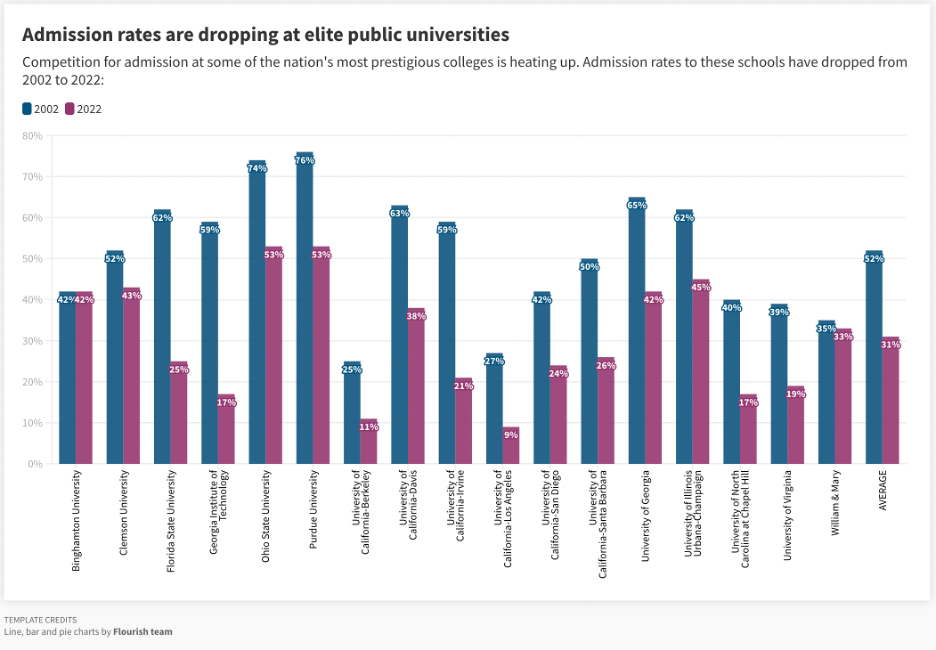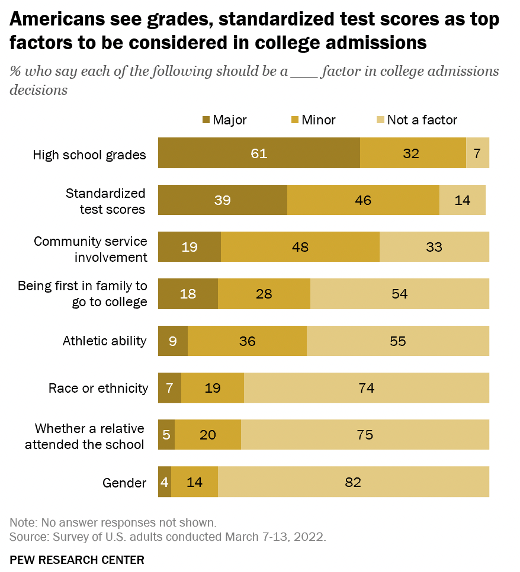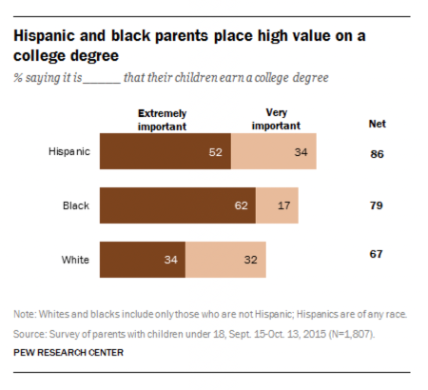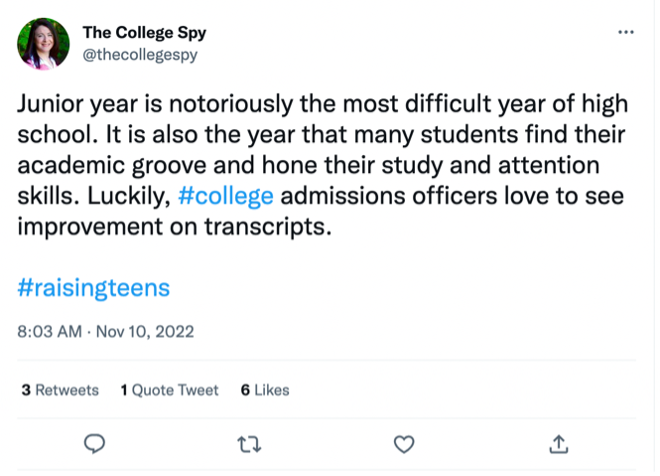The Evolution of College Admissions
By: Viktoria Kangas
Decades of college admissions processes have evolved into what is today’s requirements. These requirements have impacted people of different backgrounds throughout the decades. This includes academic standards, admissions rates, cost of admissions, income, legacy, and race. The people who received admission in the past, may not have come with the same set of challenges that are now present.
As an Alumni of the University of Georgia, Dr. Lisa Barrett reminisces of how college admissions were 49 years ago and how her experience differs from what she has witnessed plenty of today’s generation.
“It was very simple. I graduated in 1977 and hung out with REM and B52’s and had class with Herschel Walker. It was a simple time in college. When I went to take the SAT, I didn’t really know what it was about. It was a great time to be in college. I don’t remember an essay and then there was no common app it was just Georgia’s individual application,” said Dr. Lisa Barrett.
Dr. Barrett is an independent colleague consultant that has worked in higher education and college admissions and is the owner and director of 5 Points Prep. She has been serving Athens and the Atlanta, Georgia area by guiding students for undergraduate college preparations. For 15 years she has worked with numerous students and families to reach their academic goals and has earned her place in the National Association for College Admission Counseling.
Advisors such as Dr. Barrett are fundamental to comprehending the magnitude of what has come of the undergraduate college admission system. The process of applying for undergraduate college admission has cultivated into a higher competitive operation, with an increase in rigor of overall standards and the number of components necessary to be considered. These are the new challenges that continue to escalate as the students of this generation work toward receiving their higher education.
A major contributor to the increase in intensity of this process is from the volume of applicants that only rise throughout time. The Common Application formally known as the Common App, is a single online college application form used by over 900 colleges and universities. As a student you can apply to up to 20 of the Universities with the same application.
With such ease and accessibility to the college admissions process the results of the total application volume demonstrates how it adds to the increasing competition.
From the application year of 2019-2020 there were 2,030,120 applicants on the Common Application. This year, as of November 1, 2022, of the 2022-2023 data, the number of applicants up to this date alone are at 2,853,554. This is already a 41% increase up to the fall application season. The numbers are predicted to continue to accumulate in spring and the next application seasons ahead.
Higher numbers of applicants impact the odds and today acceptance rates for admissions are lower continuously increasing the pressure.

This graph shows the decreasing rates of admission of some widely known colleges.
The increase in competition of college admissions and the rigor it creates for highschoolers in the preparation has not gone unnoticed by students and parents.
Above are two recent tweets that are reactions to the college admissions process.
In terms of the measures taken, leading up to the actual application, it becomes its own process of accumulating the right pieces that will later come together to make a well-formed application. This means that the pressure of this process and a need for understanding it starts at the beginning of high school. This information overload impacts the students high school experience when trying to achieve it all.
“When you get someone early on, and they’re not feeling the stress of that junior year, it’s good, it’s a good year for them to get out and just look around” said Dr. Barrett.
The change in the lifestyle of a student changes across the decades. This is noticeable when speaking with Dr. Barrett about what she has seen within these following years compared to what it was like over 50 years ago. Her background in developmental psychology has helped her analyze what major concerns are now of students.
“With rising mental illness being a concern, that time to figure out who you are and what you enjoy. You just have smaller gaps of time to do that,” said Dr. Barrett.
Dr. Barrett goes into how to go about finding a balance to help with this issue at hand. When she is working with a student she aims to help find them something they enjoy in the community so they can do good service and enjoy it, instead of only trying to appease the college admission counselors with their extra curriculars.
Of these factor that are considered in an application that students are working towards, the highest concern that comes from Americans are academics. More than nine-in-ten Americans (93%) say high school grades should be at least a minor factor in admissions decisions.

Above is a chart that shows a recent conclusion of what the public believes should be factored into college admissions applications.
This public conclusion shows a priority to academic standards. The breakdown of what these standards are include grades such as numeric average, grade point average, and standardized test scores. The numeric average and GPA are reliant on your performance in your classes in which colleges have been seen to consider in addition to the rigor of your classes identified by Advanced Placement classes, also known as AP classes.
As for standardized testing it has been around for many years, the SAT dates to 1926 and the ACT in 1959 making it essential to the decision. In Athens, Georgia, the Clark Central Highschool’s college advisor, Gabriel Smallwood, spoke on a new element that has caused some controversy within the standardized testing community.
“The pandemic had a big impact on how things were done. I know, certain schools had a chance to do test optional, and some are still doing test optional,” said Smallwood.
The addition of this option to the mix contributes to the copious hurdles of applications that one must choose in the application process today.
The extent of what is considered in an undergraduate admissions application reaches far beyond what people prioritize as academics and extra-curricular. Colleges aim to have a holistic review on not only what you have accomplished but also who you are.
According to the college board a holistic review “involves consideration of multiple, intersecting factors—academic, nonacademic, and contextual—that enter the mix and uniquely combine to define each individual applicant.”
In a process with a myriad of factors it can be seen how people choose to focus on what more they can add to their application. Certain factors can be disclosed to colleges so they can focus on the student as a full picture includes income, the ability to afford attendance, gender, race, legacy, and being a first-generation student.
When applying to a college there is a large financial component. In this case Dr. Barrett says when she advises a student or parent, she recommends them to speak with a financial aid office and to use the colleges financial aid calculator that every college provides. This help with understanding if the cost of attendance possible for the student. With that information they can make an informed decision about whether they would like to invest time and money on that application.
This varies largely for people of all financial statuses making it important to see what is in their reach according to Dr. Barrett. Someone’s current income plays a big role in affordability and that is where many may get discouraged.
“This new analysis reveals that students are more likely to enroll in college if they believe their family can afford to send them. A student’s belief in their ability to afford college may have important implications for how they search for information on paying for college while in high school or whether to apply,” said the commissioner Peggy G. Carr of the National Center of Education Statistics.
Many who are discouraged due to cost and other personal situations end up not applying for a college education. The total of postsecondary enrollment fell to 16.2 million this spring, marking a one-year decline of 4.1 % or 685,000 students according to the National Clearinghouse Research Center.
Students that search for information about the financing of higher education will likely apply to scholarships and aid. When students don’t know where to start or if they are feeling discouraged, they can receive guidance from their school. Smallwood redirects his students to use scholarships and encourages them to apply as much as possible.
With all these external components in mind, there is additionally the assessment of attributes in an application. Attributes include race and gender which have been a long evolving topic in the world of college admission. The national standard of whether these count in the decision-making process is guided by the legalization and implementation of an affirmative action plan for higher education.
“Race conscious policies, such as affirmative action, aim to address racial discrimination by recognizing and responding to the structural barriers that have denied underrepresented students access to higher education,” according to the American Civil Liberties Union.
The current plan for affirmative action is in place for higher education and was again revisited by the Supreme Court this year. This rose the conversation of the pros and cons of race-based admissions and if they were being taken advantage of by certain colleges.
This connects back to the wholistic review that is preached by our nations educational system and how that was tested by two schools Harvard and UNC, a private and public institution. This case was presented in front of the supreme court on October 31, 2022, and the decision to keep the affirmative action plan in place was favored.
This decision is a substantial to the college admissions process in order to have equal representation of minority races at Universities across the United States.
A students experience of how they go through this process can vastly be impacted when affirmative action is in place. In addition to the equal opportunity to access higher education, data has recently shown that “Hispanic and black parents are significantly more likely than white parents to say it’s essential that their children earn a college degree,” according to the Pew Research Center. The data brings to light how minorities value their education just as much as and more than white parents, as seen in the graph.

Above is a chart that shows how much more Hispanic and Black parents value a college degree than White parents that show to be split minded.
The ability for affirmative action to be revoked brings into question the true intentions of each university and makes the future students looking for a higher education vulnerable.
In addition to race being a factor for decision making in the college admissions process, other factors have been called into question. Dr. Barrett told about how other factors such as legacy, whether you are a first generation, and personal experiences are weighed differently at every university.
A common myth would be that everything counts toward their admission. It is determined by the way you communicate about yourself to the universities of all the components you decide to disclose, include, or otherwise show.
Emphasized by Smallwood is how important it is to not only have these components in an application, but to talk with someone to make sure you are communicating optimally and showing who you are on paper. This task can set back students that have all the necessary parts to show in their application and have them fail because they did not understand how to show that in their application clearly. The method in which a student takes this process is shown in their results and placement.
“Well, I think you have to realize that there is an informational overload and there are a lot of changes. Really its within you and how you handle it and how you handle the change,” said Dr. Barrett.
With the breakdown of what evolved in the college admission process, people can expect that competition will rise and that this process will continue to change with new and old determinants.



